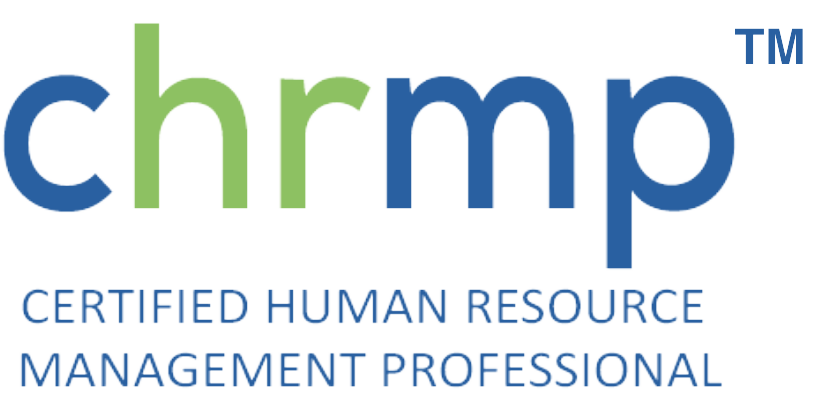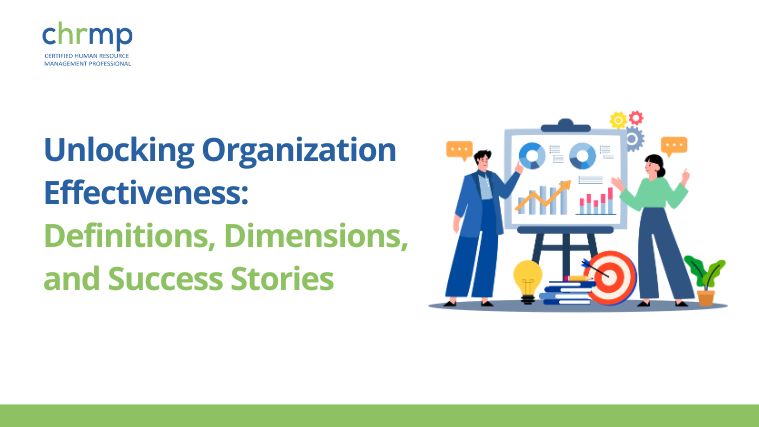Developing good HR Metrics is the key to the success of Human Resource initiatives of any organization. This in turn, may help organizations to study the trends of their businesses in the past, present and future through the use of appropriate tools along with HR Analytics.
The HR Analytics program gives a deep understanding of good metrics that can be used by HR teams to accept the right talent and effectively bring out the value of each employee.
Why develop good HR Metrics and give them a fair trial?
In the present day world, performance metrics are the key to knowing the strengths and weaknesses of any business, not alone in the area of Human Resource Management. However, the matter has become complicated, owing to the fact that large flooding has taken place in the field. Not all of them fulfill the requirements of good metrics. Many of them are nonspecific, ineffective and unrealistic.
Sometimes, some of them also prove to be incapable of measuring the performance of human resource initiatives and in turn of organizations. Copying the HR Metrics of an organization, similar to yours without understanding the basics of your own organization, may prove to be a grave error. On the other hand, consulting an expert may emerge as a costly proposition and also may not be fruitful in the long run.
[thrive_leads id=’28640′]
Also, a set of KPI Metrics, which we have developed, may prove to be ineffective in due course due to change in business realities over a period of time. Hence, making a long term plan is the best option. Further, we should never assume that key metrics may solve all your problems in one go through the ways to measure productivity.
We must bear in mind that any paradigm shift in the organization takes time. Incremental improvements are the key to success in creating a paradigm shift in any organization. Considering that, our HR advanced certification program takes a deeper look into the various HR domains where analytics can play a vital role in solving and transforming a business challenge. In view of the above, the author has formulated 8 tips to develop good Human Resource Metrics for any organization.
TABLE OF CONTENT
Essential tips for developing good HR Metrics
1. Ask critical questions before developing HR Metrics
Asking critical questions like Why, What If and How, concerning your business, organization or people, may prove to be the bane of developing good HR Metrics. As per wabisabilearning, critical questions can reinforce viewpoints, facilitate discussions, prompt and help us to see things from a new or detailed perspective.
Also, these questions may belong to any of the following:
- Human capital.
- Resource availability.
- Costs involved.
- Locational aspects.
- Cultural aspects of the workforce.
- Workforce distribution: Talent-wise & Skill-wise.
- Past experiments, which you made in the organization with respect to HR Metrics and results therein.
- Skill mapping in the organization.
- What others have done with respect to these aspects, and how they could solve the problem?
- Do you face a critical situation, and are you sure that only totally new HR metrics may solve the problem?
You should also try to understand, under what category the HR Metric should come, keeping in view the problem.
HR metrics that we develop, thus may belong to any of the following:
- Team performance (evaluation metrics).
- Employee productivity & performance reviews (productivity metrics).
- Learning & development (data metrics).
- Recruitment team & hiring (management metrics).
- Employee engagement (performance metrics).
2. Understand that good HR Metrics enhance the rate of success of the organization.
Since the employee performance metrics deal with HR functions, and they are connected to people, they ultimately lead to success being achieved by organizations.
This is possible due to the following reasons:
- Management of people including tackling the areas of talent acquisition, motivation, nurturing creativity, and many other facets help in this.
- Organizational goals are the key focus area. In good Company Metrics, overall organizational goals and strategic targets must be explained in clear cut terms. This helps organizations be successful. The realization of this particular aspect makes you extra careful.
For understanding in a better way, why you should be careful in selecting HR Metrics, please refer to the blog designed specifically for HR working professionals which CHRMP has published earlier as follows:
Why You Should Be Careful In Choosing The HR Metrics Of Your Organization.
3. Avoid the common mistake in developing the HR Metrics
If we see the literature, we find that researchers have done a lot of work in identifying and avoiding ineffective Human Resource Metrics. As per reference, hrdailyadvisor.blr.com, two common errors are there which make HR metrics totally worthless.
As per Dr. Sullivan, these two errors are:
- Metrics in vacuum
- Too many metrics
The reference, www.ere.net, lists 25 reasons why you might have ineffective HR Metrics. Smarter workforce institute of IBM in their article, ‘The secret to reducing hiring mistakes’, elaborates on HR Metrics, organizations are trying to use for the hiring process.
[thrive_leads id=’28638′]
Their opinion is as follows:
- Efficiency metrics are easy to measure, but the quality metrics are more effective
- Not all metrics are created equal
- Strike a balance between quality and quantity
- Provide attention to what you want to measure through HR metrics
- Give a top priority to metrics, which are being used
The reference, apexgloballearning.com, in their blog, ‘Common hr metrics and analaytics you should avoid’, lists the following mistakes which we unknowingly commit.
- Not telling the stories behind the numbers
- The disconnect between the metrics and business goals
- Letting vendors do the work
- Having too many metrics
- Only focusing on recruiting metrics
- To not make your metrics count
4. Determine the organizational goals
It is the distinct opinion of the author that the most important step in developing good HR metrics is determining and being fully aware of overall organizational goals.
This may be done through the following:
- Preparing a detailed strategic & business planning document
- Detailed & participative discussions with organizational stakeholders
Thus, SMART (Specific, Measurable, Achievable, Realistic, Time-Bound), some of the organizational goals will be developed.
Some of the organizational goals may be as follows:
- Sales or revenue targets
- Customer satisfaction index
- Reward & recognition goals
- Net profit of the organization
- Cost reduction index or plan
- Productivity improvement index or plan
- Organizational output targets
The role played by HR professionals should be visualized & decided by the organizational stakeholders. This is one of the most important facets of developing good HR Metrics.
5. Align the HR Metrics with organizational goals & set the metrics targets
As per the procedure in section 2.4, we have adjusted and determined determined the organization goals and the role played by HR professionals. We may now, develop the HR metrics keeping in view the organizational goals and stipulated role of the HR department.
This process consists of the following 4 steps:
STEP 1: Determine the organizational goals. They must be SMART.
STEP 2: Assess & decide the HR support required to achieve SMART organizational goals.
STEP 3: Determine HR Metrics.
STEP 4: Set specific, measurable, realistic and quantity based targets to the HR Metrics after discussion with all concerned.
In the reference, www.forbes.com, Dan Fries, avers that the following 6 HR Metrics which matter most in today’s business environment are:
- Time to fill & turnover costs ( payroll metrics )
- Absence rate
- Engagement & job satisfaction rate
- Employee tenure
- Improvement of new hires performance for the betterment of the quality of hire
- Percentage of performance goals met
6. Communicate HR Metrics to team & management
The reference, compensation.blr.com, suggests that HR metrics must be communicated to the team & management through the following ways:
- Make it clear
- Don’t double-dip
- Keep it simple
Involving each & every member of the team and the management is the most vital prerequisite to their successful implementation.
7. Create and strengthen a strong emotional culture in the organization
7.1 Taking care of people is very important
Photographer: Nick Page | Source: Unsplash
We must bear it in mind that taking care of people is a very important facet in the prosperity and wellbeing of the organization. If you scan the literature, you may find an enormous amount of information on how to nurture a sense of belongingness among employees and how to motivate them. However, the author is of the distinct opinion that repeating the same cock and bull story, utilizing old age motivation techniques, may not serve a better purpose.
7.2 Creating and nurturing emotional culture in the workplace is very important
However, applying an entirely new concept of creating and nurturing emotional culture at the workplace may prove to be a great breakthrough in taking care of people. The quality of hire determines the candidate experience and hiring manager satisfaction. We, at CHRMP, have done a good amount of research on the following facets of emotional culture creation and its nurturing at the workplace:
- Improving employee engagement through emotional management
- How to manage negative and positive emotions in the workplace
- Managing your own emotions and the emotions of others
- Creating and building a strong emotional culture in the workplace
- The methodology of measuring it
The following blogs, published by us, may help you a lot, in creating a strong emotional culture in your organization. It may also help in improving the participation and contribution of employees.
Improving employee engagement through emotional management at workplace
5 Tips to manage your emotions at the workplace
6 Tips to manage the emotions of others in the workplace
How HR should manage negative emotions in the workplace
How to enhance the level of positive emotions in the workplace
How to improve the emotional culture of your workplace
How HR will determine if their organization possesses a strong emotional culture
It is the distinct opinion of the author that creating and sustaining a strong emotional culture in the workplace is the ultimate key to flourishing and achieving astounding success. With respect to HR Metrics, this is equally important. Analytics and metrics in payroll play a vital role in the job boards, job description, offer acceptance rate, conversion rate and business metrics performance. Please remember that unless people are made an integral part of any process including HR Metrics, it is bound to fail.
8. Give it a fair trial, followed by stabilizing
Before giving a fair trial to new HR Metrics, please ensure the following:
- Data sources are identified & data quality fulfill the requirements of CARE (Consistent, Accurate, Reliable & Efficient)
- Measurement methodologies are in place
- The composite action plan has been made, listing the steps & individuals responsible for the tasks
Also, it may never be construed as a limited or short-term affair, rather both the short & long term strategies must be in place. If your trial is successful, reinforce it further. However, if HR Metrics fail to deliver, do a SWOT analysis, and come out with modified or totally new metrics.
Types of Metrics include :
- Goal metrics
- Evaluation metrics
- Data metrics
- Recruitment metrics
- KPI Metrics
- Performance metrics
- Regression metrics
If you are looking to upgrade your skills in HR Analytics, you might want to consider a certification in HR Analytics by CHRMP. To learn more click here.
Stay updated with the latest trends and best practices in the field of HR with CHRMP Continuing Professional Development (CPD) Membership.
CPD membership has proved to be invaluable as it helps you develop new age competencies and stay relevant in the field of HR.
Enroll now to benefit from the CPD Exclusive Members’ privileges.
Frequently asked questions :
Why Is Communication Important in Leadership?
Leaders must communicate effectively if they want others to follow them. Effective leaders empower others to achieve their goals. Communication is key to gaining trust, getting things done, and inspiring positive change. Lack of effective communication creates obstacles that prevent success.
Communication skills are essential for success as a leader. Here are eight key traits leaders should possess if they want to improve their effectiveness.
What Are HR Metrics?
HR metrics help companies better understand how personnel efforts are maximizing their business, and reveal weaknesses that leaders must address. Do you know what the ROI of your HR programs is? How valuable is each employee? Did you calculate the value of your company’s human resources? HR metrics help leaders comprehend the costs and benefits of HR management, and it helps them make decisions about whether or not to invest more money into HR initiatives.
Measuring the success or failure of HR’s programs is crucial to understanding how capable the organization is at acquiring and retaining talent. They provide value to the company by assisting managers in developing a clear picture of how well the department is meeting agreed upon goals and objectives, and measuring the results helps leaders understand how effective the HR department truly is.
An organization that understands how to effectively use data to drive business decisions will be better equipped to make informed strategic choices. These insights allow leaders to identify opportunities to improve processes and operations, increase productivity, and reduce costs.
Turnover rates may be high, but does the company benefit as the lowest producing employees leave? Higher training costs per employee result in higher revenues? Percentages alone do not tell the whole story, however paired with real time data can provide a clearer picture.
In order to reduce turnover, you should make sure your organization has effective communication productivity software. You need to be aware of any problems before they become a problem for your company.
Why are HR metrics important to organizations?
- HR metrics help companies better understand the cost of hiring and firing.
- HR metrics help leaders comprehend how capable the organization is.
- Measuring the success or failure is crucial to understanding how effective the HR department is.
- An HR metric helps you understand if you’re doing the right thing.






